Michelle Liang (she/her) wrote this letter in July, 2024.
This Friends and Chosen Family letter is a little different. I thought, sometimes my favorite way of receiving stories is sitting down with my friends and flipping (or scrolling) through a photo album and listening to their commentary on each photo. This is meant to convey that. ![]()
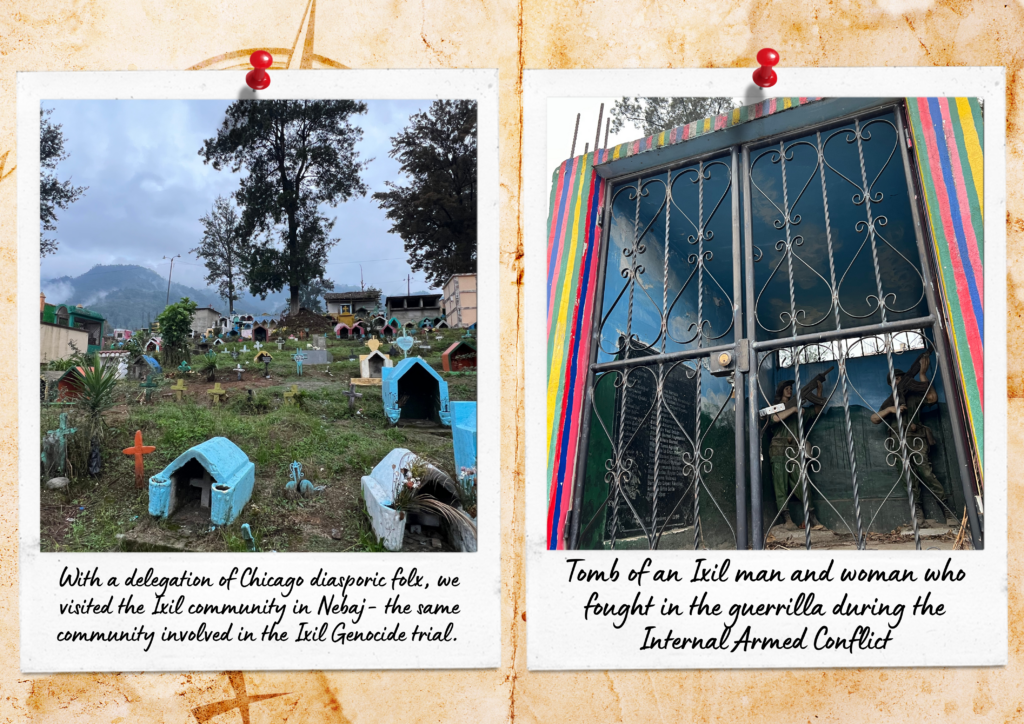
Cemetery in Nebaj, Quiché, and Tomb of an Ixil man and woman who fought in the guerrilla during the Internal Armed Conflict
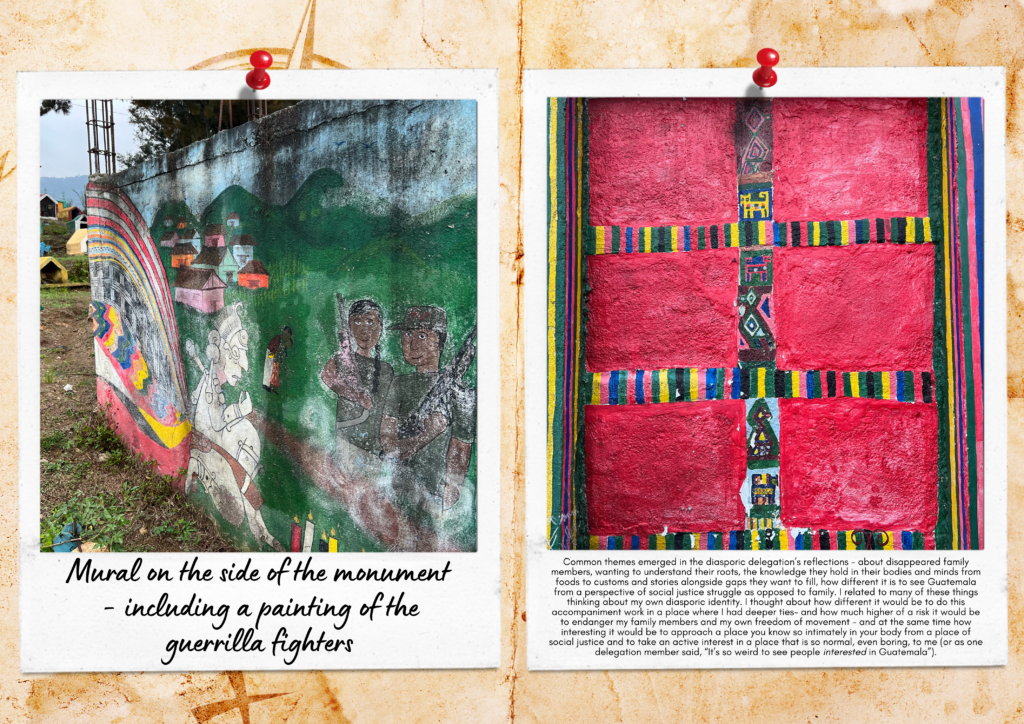
Mural on the side of the monument with a painting of the guerrilla fighters, and Painting on the side of the monument to the guerrilla fighters
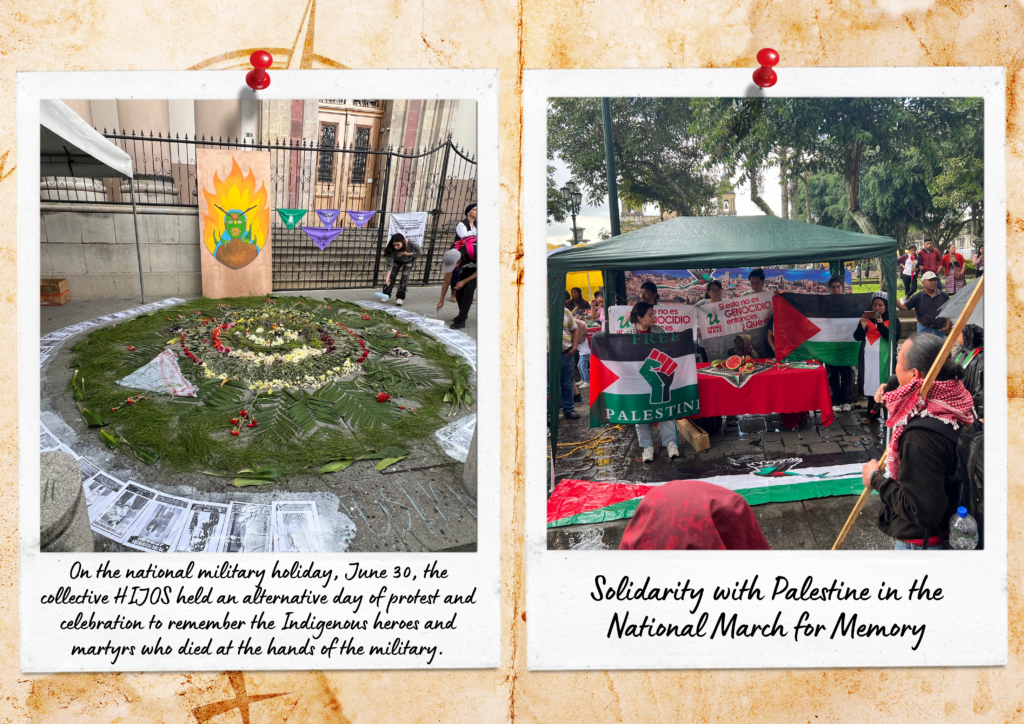
Altar for Disappeared Persons in the March for Memory by HIJOS, and Installment in the March for Memory in Solidarity with Palestine
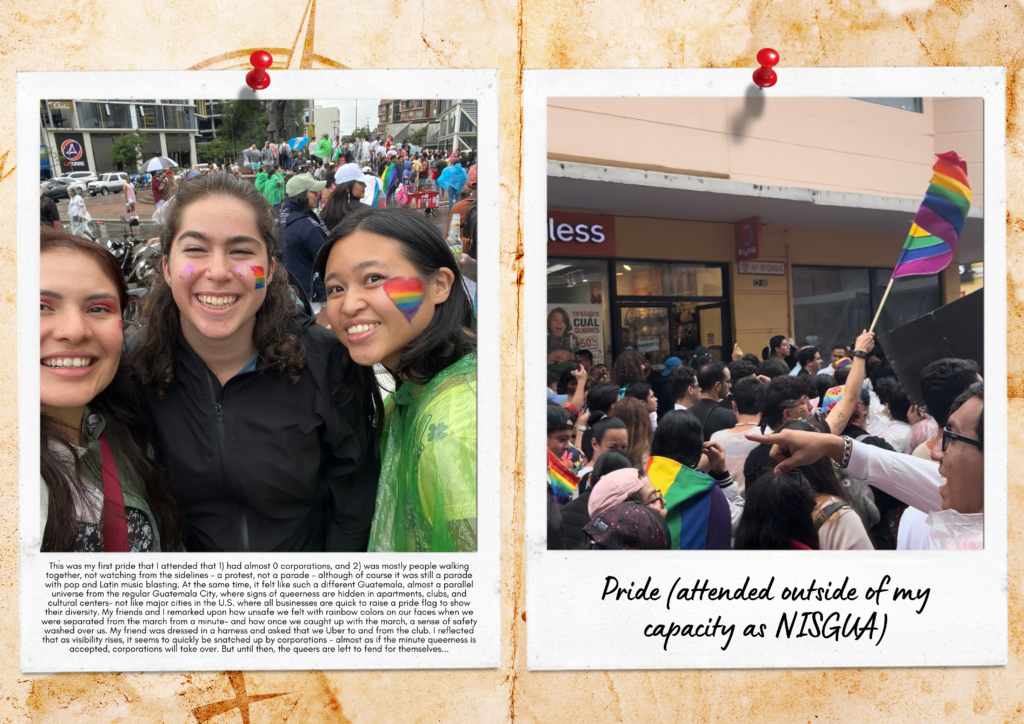
Friends at Pride
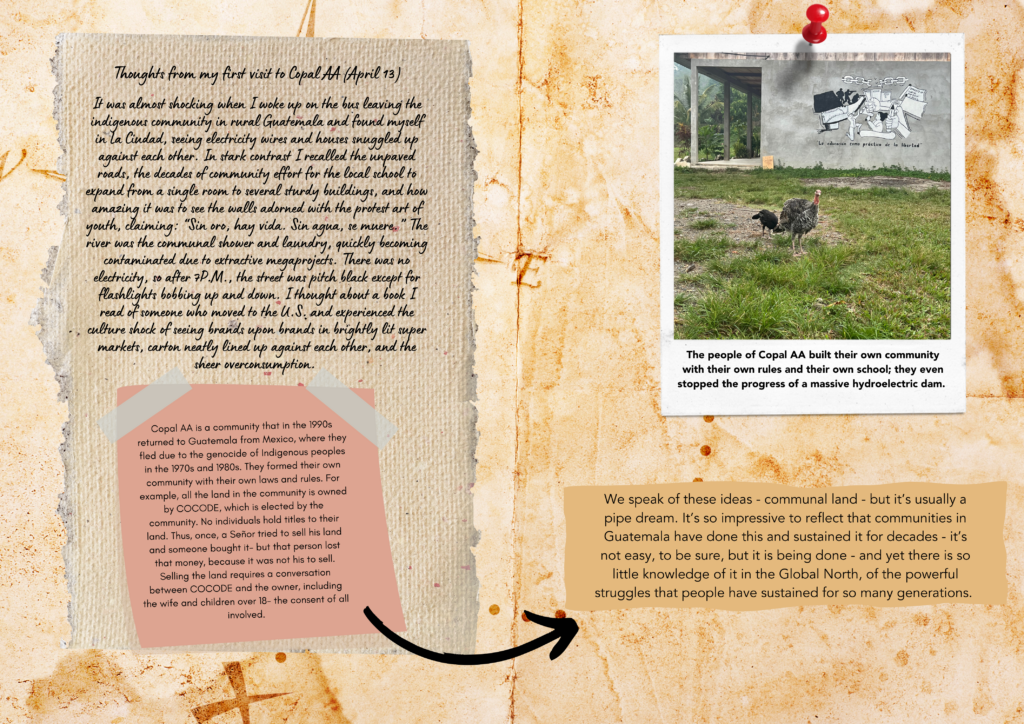
A turkey in front of a political mural
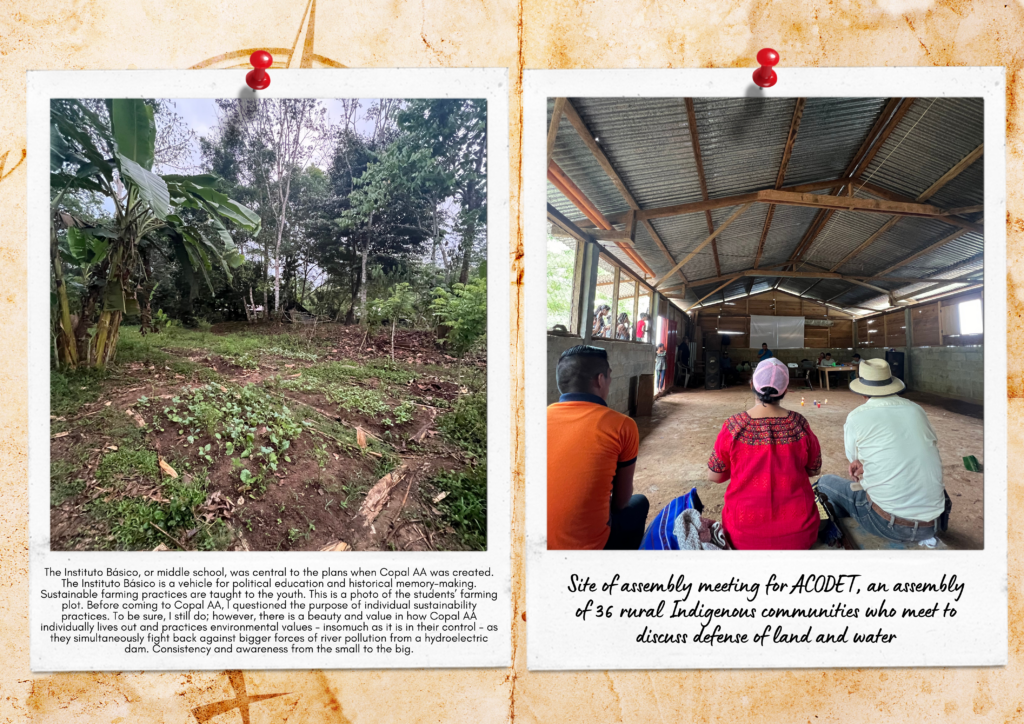
A plot of land behind the Basic Institute, or Middle School, on which youth at the school practice sustainable farming practices, and Site of assembly meeting for ACODET
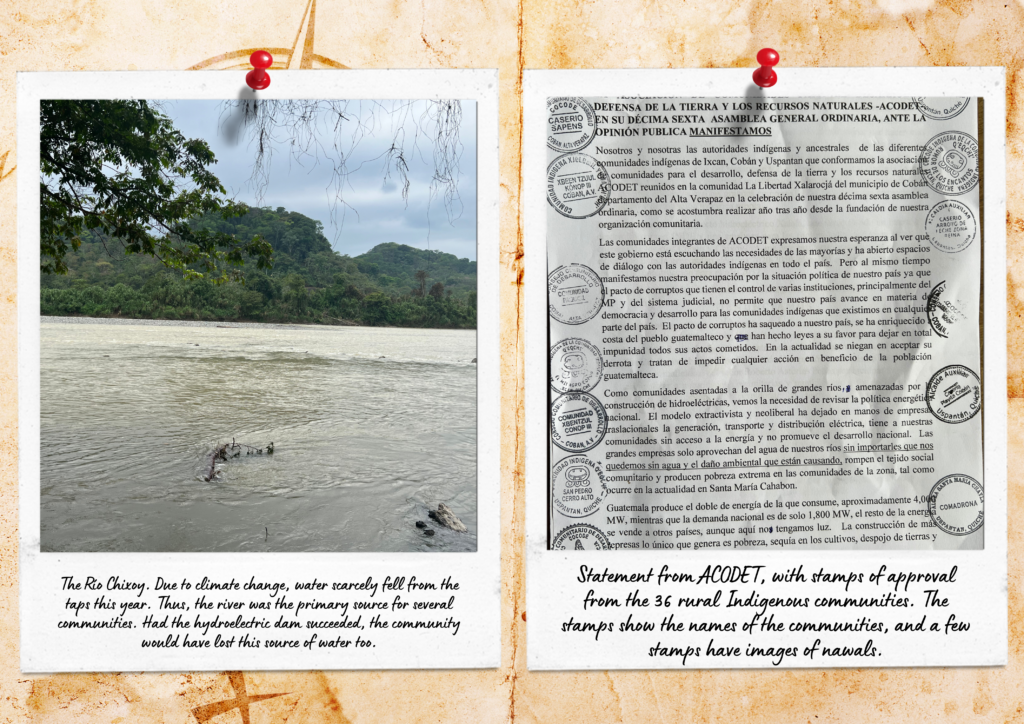
The Rio Chixoy, and Statement from ACODET, with stamps of approval from 36 rural Indigenous communities.
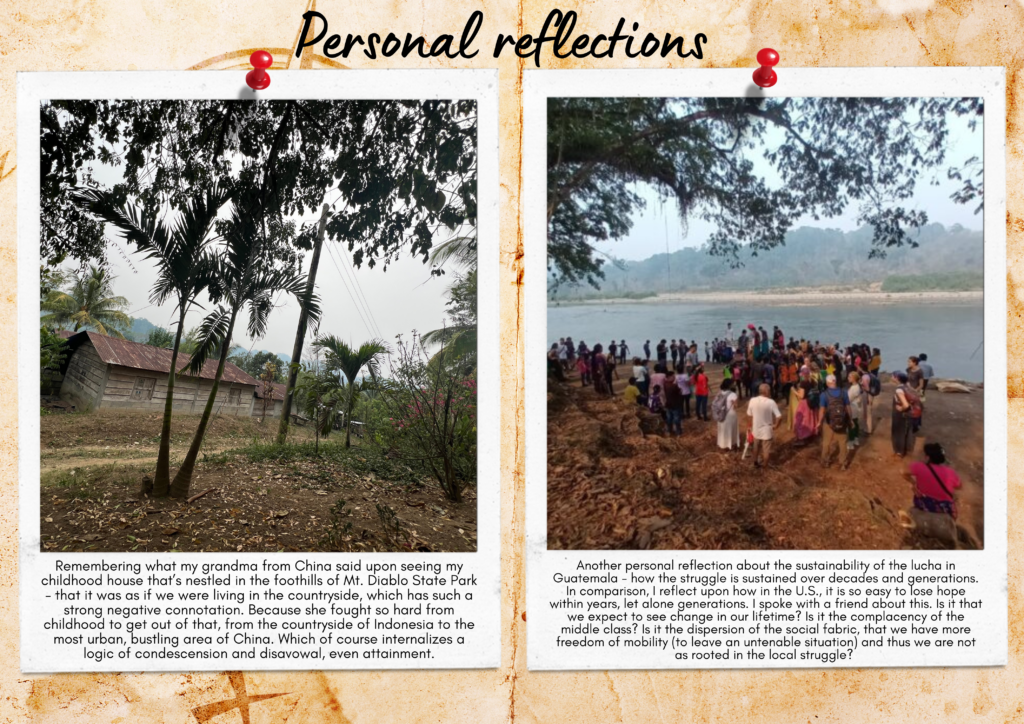
Wooden house in Copal AA, and The community gathered at the Rio Chixoy as the destination of the march. There are children in costumes and on stilts.
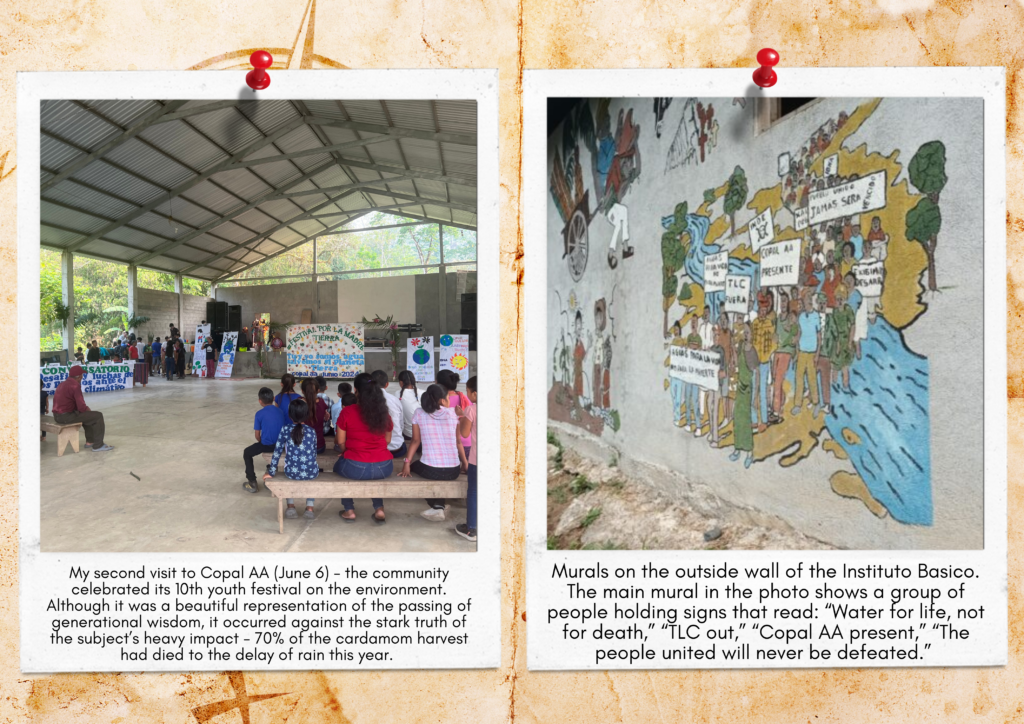
Panel of speakers in the event salon, and Murals on the outside wall of the Instituto Basico. The main mural in the photo shows a group of people holding signs that read: “Water for life, not for death,” “TLC out,” “Copal AA present,” “The people united will never be defeated.”
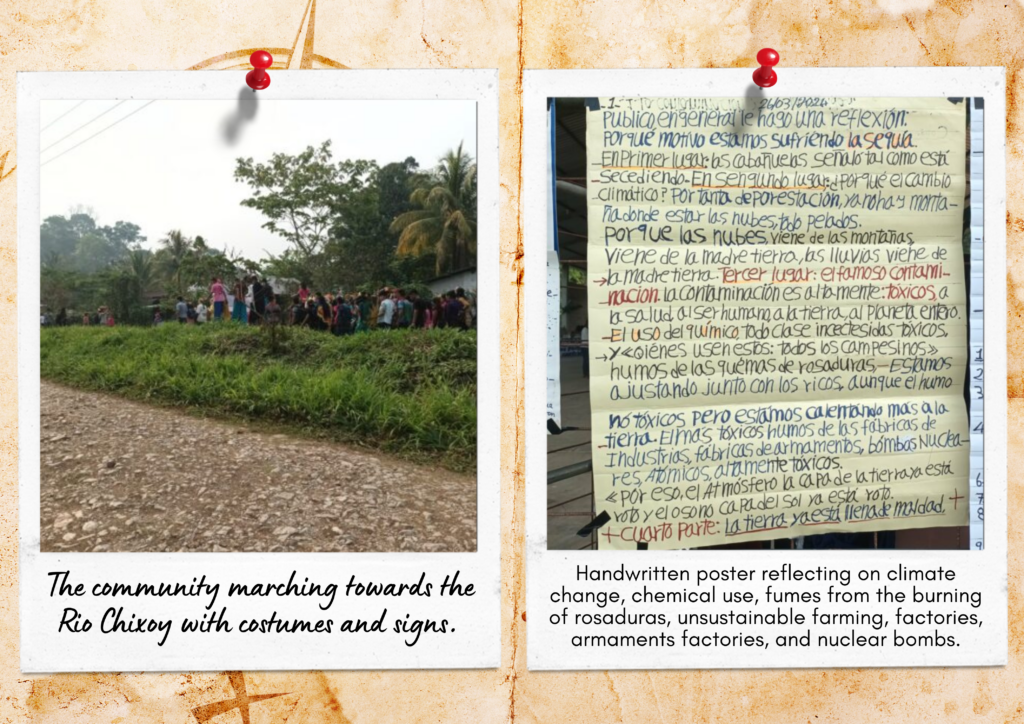
The community marching towards the Rio Chixoy with costumes and signs, and a yellow poster hanging on the fence of the event salon. The handwritten text reads: “I would like to make a reflection to the general public: The reason we are suffering from the drought. First of all, the rainfall is as follows -Secondly: why is Climate change? Because of so much deforestation, there is no longer any mountains for the clouds, all peeled. Because the clouds, it comes from the mountains, the rains come from the mother earth. Third place: the famous pollution. Pollution is highly: toxic, to health to the human being, to the earth, to the whole planet. Chemical use, all kinds of toxic incectisides, Who use these: all the farmers, fumes from the burning of rosaduras- We are adjusting along with the rich, although the smoke is non-toxic but we are heating up the earth. The most toxic fumes of the factories of Industries, armaments factories, nuclear bombs, atomic, highly toxic.
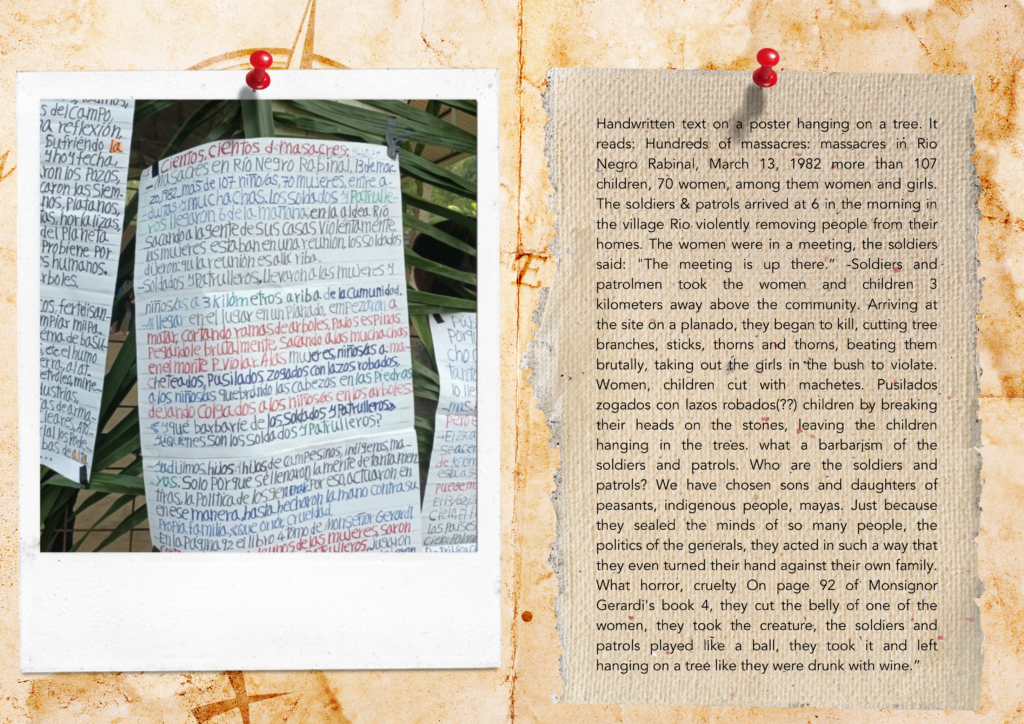
Handwritten text on a poster hanging on a tree

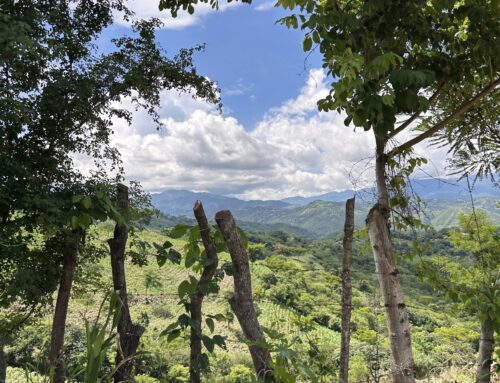
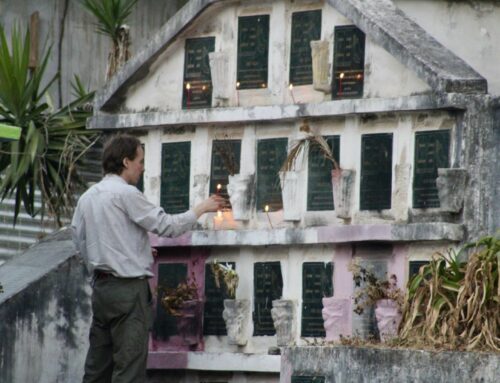
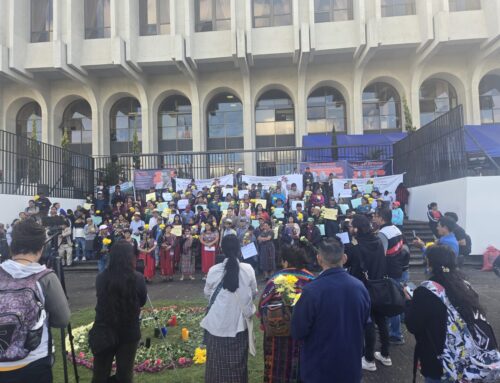
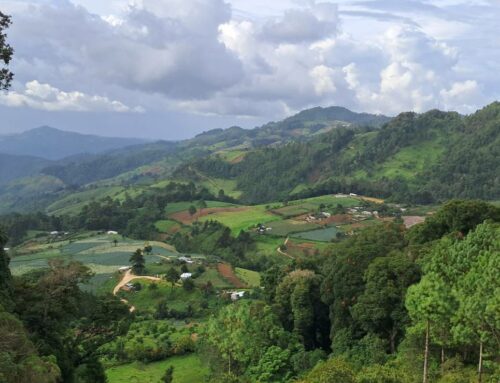
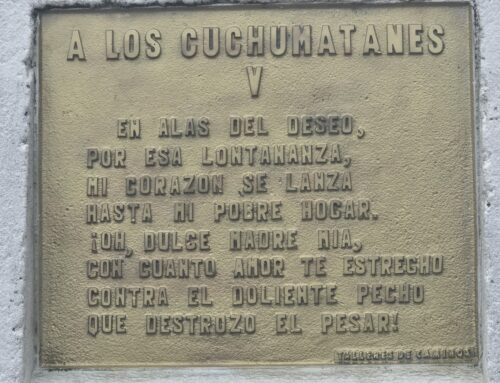
Leave A Comment